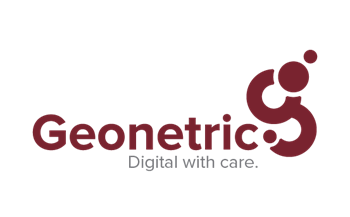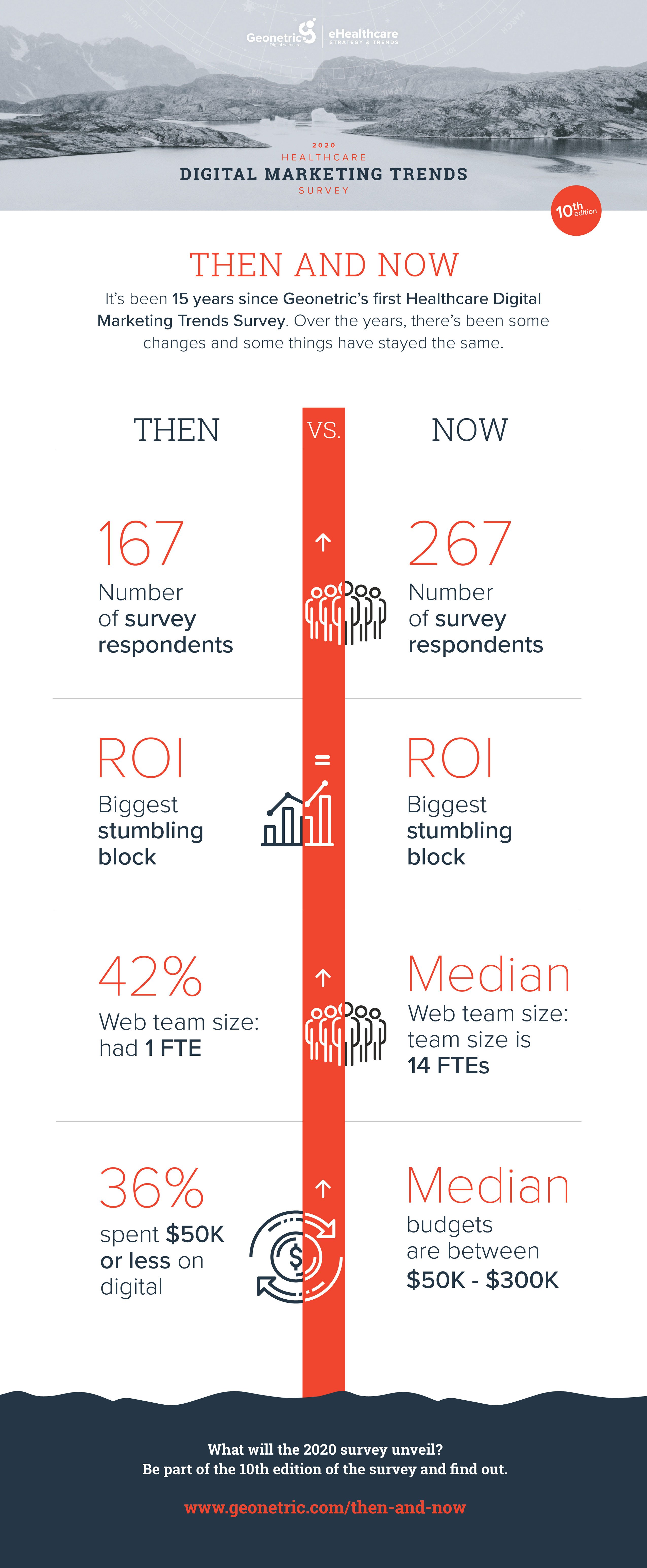
Fifteen years ago digital looked very different. And healthcare looked very different.
In 2005 when Geonetric started the Healthcare Digital Marketing Trends Survey, access to data on how organizations were using digital was minimal. And data around how healthcare specifically was using digital was even scarcer.
In 2005 websites were still becoming the norm. Content management systems weren’t as sophisticated as they are today. Building MarTech stacks wasn’t even on most marketers’ radar.
Take the 2020 Healthcare Digital Marketing Trends survey today!.
As an industry, mergers and acquisitions weren’t business as usual. Telehealth wasn’t common in traditional provider settings and has only taken off for most organizations in the last five years. Consumerism wasn’t a term used in healthcare in 2005, and most healthcare consumers weren’t really worried about their rising out-of-pocket costs. Not to mention, according to Pew Research, only 65% of Americans owned a cell phone in 2005, compared to 96% today.
Geonetric started the Healthcare Digital Marketing Trends Survey primarily to help our clients gauge must-have features for their websites and intranets. Provider, location, and service directories weren’t as common, and the data helped organizations – and us – learn how hospitals were using the web to connect site visitors with doctors and services.
Looking back the first survey results show just how far we come, but at the time the data was invaluable as teams worked to defend investments in digital to their executives.
In 2005:
In the 2019 survey, you can see just how much the industry has changed.

Digging into the 2019 data, we learned:
In that first survey in 2005 respondents were asked what their biggest obstacle was. They replied, proving ROI (return on investment).
In 2019 – ROI is still a concern. Although it’s still an obstacle in a lot of ways, the way it poses a problem today demonstrates just how much more sophisticated we all are.
ROI is no longer the top digital goal, falling behind consumer experience, consumer engagement, patient acquisition, patient satisfaction, and consumer awareness in the 2019 results – but it still proves elusive to demonstrate.
In an effort to look more deeply into obstacles around ROI, survey respondents who indicated they were not able to demonstrate positive ROI were asked an additional question to uncover the reason in 2019. With almost 69%, lack of tools and infrastructure topped the list of reasons ROI is hard to measure. Despite inroads in CRM implementations, healthcare organizations are still struggling to tie financial results to marketing efforts. This may be due to the level of integration with CRM platforms, failure to successfully link with other financial systems, or may result from the types of marketing and campaign efforts used by healthcare organizations. Even more interesting is the second most cited reason: Nearly one-third of respondents indicated they don’t measure ROI because no one is asking them to do so.
Every year the survey shows us just how far we’ve come as an industry to make our digital experiences more meaningful for healthcare consumers. And this year, with COVID-19 changing the healthcare landscape dramatically, we’ve added new questions and sections to help healthcare marketers better gauge how employee communications and content marketing are continuing to shift as we all return to a new normal.
This year’s survey marks our 15th year and will be our 10th edition. We hope you will participate and help build the knowledge base for the industry as a whole.


The original version of this page was published at: https://www.geonetric.com/digital-strategy/then-and-now-infographic-healthcare-digital-marketing-trends-survey/
At Geonetric, we create compelling digital experiences for healthcare organizations that make lasting patient connections and drive organizational growth. We solve your challenges with expert UX, ... Read more
Being there for your communities, patients, and internal teams has never been more important than it is today. We know healthcare marketers are working harder, longer hours than you ...read more
Return on investment (ROI) is always a top goal. Does the average healthcare marketing team achieve it? If not, what’s in the way?If ROI is so important, why aren’t more ...read more
Looking to build lasting patient loyalty? The answer is to create an experience that makes it seamless for them to choose you— and stay with you. Much like any other sector, ...read more
Is your health system impacted by the Meta pixel’s invasive tracking practices? Find out what it is, how it risks sensitive data and what to do about it to protect your patients.When ...read more